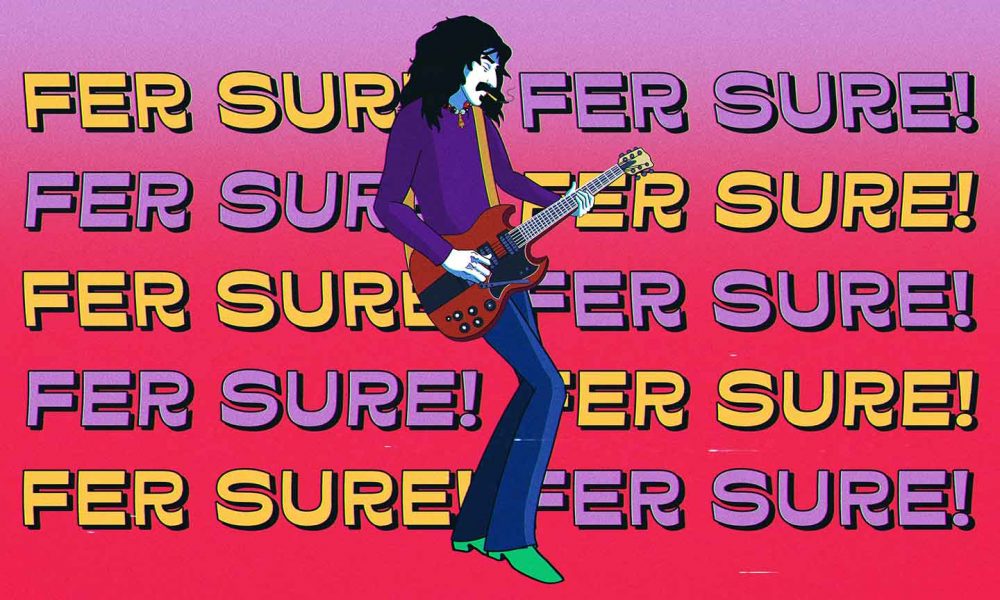‘Valley Girl’: How Frank Zappa Scored An Unlikely Hit Single
For Moon Unit Zappa, quality time with her father resulted in unexpected chart success.

By the early 80s there wasn’t much that Frank Zappa could do to surprise his fans. He’d experimented in psychedelia, jazz, funk, even doo-wop, while pushing boundaries with satirical and often plain bizarre lyrics and album concepts. But with his 1982 single, “Valley Girl,” Frank Zappa did something truly unexpected – he had a hit single. And, even stranger, it wouldn’t have happened at all without his then-teenage daughter, Moon Unit Zappa.
The Zappa family
Frank spent much of his time at home in Los Angeles in the early 80, but his waking hours were mostly spent working in his basement recording studio. According to his autobiography, 1989’s The Real Frank Zappa Book, family came second to music – wife Gail was described as his best friend, but their conversations mainly concerned business and his children knew not to interrupt his work. According to Moon, “I did feel his presence in the house, but you didn’t bother my father unless it was really important.”
The Zappa kids – Moon, Dweezil, Diva, and Ahmet – had an unconventional upbringing by the standards of the day. They called their parents by their first names, they decided whether or not to go to school, they were given the kind of freedoms that children dream about. Ahmet told The Guardian in 2006, “Right away, we were recognized as individuals and brought up to believe in ourselves. My parents always said, ‘You like that, you pursue that.’” Despite this, Moon craved normalcy, “I hated it. It always left me with an awful floating feeling… too much space, too many choices… I craved rituals and rules like my friends had.”
In an attempt to reach out to her father, Moon took matters into her own hands. At some point between September 1980 and 1981, she slipped a note under Frank’s studio door addressed to “Daddy” reading, “I’m 13 years old. My name is Moon. Up until now I have been trying to stay out of your way while you record. However, I have come to the conclusion that I would love to sing on your album.” She went on to suggest that, should Frank be interested in working with her she might use her ”Encino accent” or her “Surfer Dood talk” – two of many of Moon’s satirical impersonations that were popular in the Zappa household. In terms of contact details, Moon gave the house telephone number and suggested that Frank “call her agent,” her mother Gail, upstairs in the kitchen.
The recording
Frank took his time but in early 1982, just before he set off on a European tour, he took Moon up on her offer. Frank and drummer Chad Wackerman had been jamming around a riff that Frank had recorded at a soundcheck around a year before. Zappa and Wackerman’s track was unusually straightforward – a gonzo riff set to an energetic 4/4 beat, like an unhinged “My Sharona.” The backing track complete, Frank woke Moon to ask her to contribute vocals, despite it being 3 AM on a school night. Yawning but a professional, Moon seized the window to deliver what would unwittingly start a movement and global love affair with a universally understood archetype – the lovable, precocious, unfiltered airhead. With playful prodding from her father, Moon improvised over the track, using some invented and some overheard comedic phrases she’d heard used by her peer group in the San Fernando Valley. The more her father laughed, the more Moon enthused.
The reaction
Frank added the deadpan chorus and bass from Scott Thunes and cut Moon an acetate before he set off on tour and placed US promotion in her young hands. The dutiful teen was thrilled when her favorite radio DJ Jed The Fish played the song on the most popular radio station she adored, KROQ-FM. The song was an immediate hit with listeners, so the station kept hold of the acetate to keep playing it. Rival stations bootlegged the song and started playing it too – before long, it was apparent that the song had serious commercial potential, a breakthrough for Frank Zappa who had never had significant radio airplay before.
The song appeared on the next Zappa album, Ship Leaving Too Late To Save A Drowning Witch, which was released in the US on May 3. Curiously, considering ‘Valley Girl’’’s notoriety, the song wasn’t released as a 7” single until August 30. Still, despite the delay, it became a rare US Top 40 hit for Zappa and pushed Ship Leaving… to No. 23 on the album chart, Zappa’s highest placing since 1979’s Sheik Yerbouti. And then there was the merchandise – licensing rights were sold for “Valley Girl” dolls, clothing, cosmetics, jewelry, posters, a coloring book… you name it, Moon had sparked a cultural phenomenon.
Frank never seemed enamored with the song and was disappointed that the general public seemed to think of it as a novelty song rather than damning satire, telling Billboard, “People think ‘Valley Girl’ is a happy kind of song, but it isn’t. I’ve always hated the Valley. It’s a most depressing place… It just goes to show that the American public loves to celebrate the infantile.”
For Moon though, she achieved what she set out to do, as she told People, “I had no idea it was going to be such a big hit. I just wanted to spend some time with my father.”














